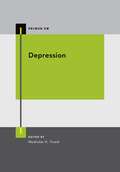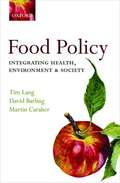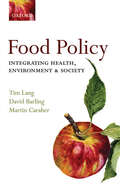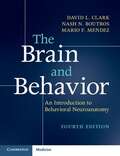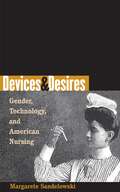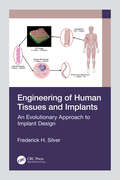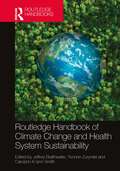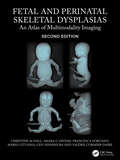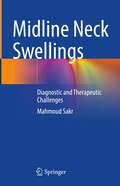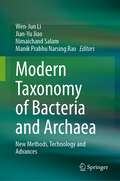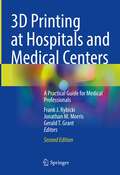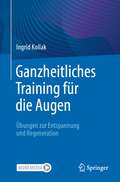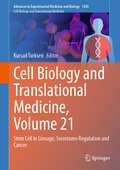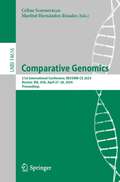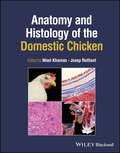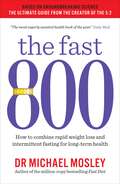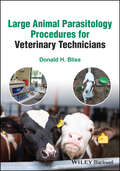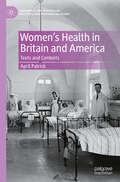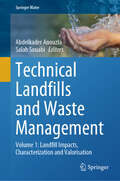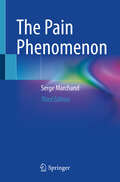- Table View
- List View
Depression (Primer On Series)
by Steven M. StrakowskiMajor depressive disorder (MDD) is a serious, debilitating, life-shortening illness that affects many persons of all ages and backgrounds. The lifetime risk for MDD is 7-12% for men and 20-25% for women (Kessler et al., 2003). MDD is a disabling disorder that costs the U.S. over $200 billion per year in direct and indirect costs (Greenberg et al., 2015), and is the leading cause of disability worldwide (WHO, 2018). Depression also has detrimental effects on all aspects of social functioning (e.g., self-care, social role, and family life, including household, marital, kinship, and parental roles). While there have been several treatments that are efficacious, many individuals suffering from depression experience life-long challenges due to the chronic and episodic nature of the disease. Identifying strategies to find the right treatments for the right patients is critical. Ongoing research has explored the importance of examining physiologic biomarkers, as well as clinical characteristics to gain a better understanding of subtypes of depression, which will lead to improved treatments and better outcomes. This book provides an introduction to the etiology and pathophysiology of depression, common comorbidities and differential diagnoses, pharmacotherapy strategies, psychotherapeutic and neuromodulation interventions, novel and non-traditional treatment strategies, and considerations in special populations.
Food Policy: Integrating Health, Environment And Society (pdf)
by Tim Lang David Barling Martin CaraherFor over half a century, food policy has mapped a path for progress based upon a belief that the right mix of investment, scientific input, and human skills could unleash a surge in productive capacity which would resolve humanity's food-related health and welfare problems. It assumed that more food would yield greater health and happiness by driving down prices, increasing availability, and feeding more mouths. In the 21st century, this policy mix is quietly becoming unstuck. In a world marred by obesity alongside malnutrition, climate change alongside fuel and energy crises, water stress alongside more mouths to feed, and social inequalities alongside unprecedented accumulation of wealth, the old rubric of food policy needs re-evaluation. This book explores the enormity of what the new policy mix must address, taking the approach that food policy must be inextricably linked with public health, environmental damage, and social inequalities to be effective. Written by three authors with differing backgrounds, one in political science, another in environmental health and health promotion, and the third in social psychology, this book reflects the myriad of perspectives essential to a comprehensive view of modern food policy. It attempts to make sense of what is meant by food policy; explores whether the term has any currency in current policy discourse; assesses whether current policies help or hinder what happens; judges whether consensus can triumph in the face of competing bids for understanding; looks at all levels of governance, across the range of actors in the food system, from companies and the state to civil society and science; considers what direction food policies are taking, not just in the UK but internationally; assesses who (and what) gains or loses in the making of these food policies; and identifies a modern framework for judging how good or limited processes of policy-making are. This book provides a major comprehensive review of current and past food policy, thinking and proposing the need for what the authors call an ecological public health approach to food policy. Nothing less will be fit for the 21st century.
Food Policy: Integrating health, environment and society
by Tim Lang David Barling Martin CaraherFor over half a century, food policy has mapped a path for progress based upon a belief that the right mix of investment, scientific input, and human skills could unleash a surge in productive capacity which would resolve humanity's food-related health and welfare problems. It assumed that more food would yield greater health and happiness by driving down prices, increasing availability, and feeding more mouths. In the 21st century, this policy mix is quietly becoming unstuck. In a world marred by obesity alongside malnutrition, climate change alongside fuel and energy crises, water stress alongside more mouths to feed, and social inequalities alongside unprecedented accumulation of wealth, the old rubric of food policy needs re-evaluation. This book explores the enormity of what the new policy mix must address, taking the approach that food policy must be inextricably linked with public health, environmental damage, and social inequalities to be effective. Written by three authors with differing backgrounds, one in political science, another in environmental health and health promotion, and the third in social psychology, this book reflects the myriad of perspectives essential to a comprehensive view of modern food policy. It attempts to make sense of what is meant by food policy; explores whether the term has any currency in current policy discourse; assesses whether current policies help or hinder what happens; judges whether consensus can triumph in the face of competing bids for understanding; looks at all levels of governance, across the range of actors in the food system, from companies and the state to civil society and science; considers what direction food policies are taking, not just in the UK but internationally; assesses who (and what) gains or loses in the making of these food policies; and identifies a modern framework for judging how good or limited processes of policy-making are. This book provides a major comprehensive review of current and past food policy, thinking and proposing the need for what the authors call an ecological public health approach to food policy. Nothing less will be fit for the 21st century.
The Brain And Behavior: An Introduction To Behavioral Neuroanatomy (pdf)
by David L. Clarke Nash N. Boutros Mario F. MendezNow in its fourth edition, The Brain and Behavior introduces the field of neurobiology of human behavior to a wide audience, from graduate students to professionals in the fields of psychology, psychiatry, and neurology. This comprehensive resource focuses on locating human behaviors to specific regions of the brain, aiming to make a complex topic visually accessible through the inclusion of clear and focused illustrations. This important new edition emphasises recent developments in our understanding of the human brain which have emerged from imaging studies. The text also features patient case histories with documented anatomical evidence, tying the science with actual clinical examples, making it the most accessible book for medical practitioners of all levels. The collaboration between a neuropsychiatrist, a behavioral neurologist, and a neuroanatomist has resulted in a book which synthesizes the complex and evolving information on the neurobiology of human behavior, and presents it in an eminently readable volume. This new fourth edition has been completely revised and updated Highlights the basis of psychiatric disturbances which allows clinicians to explain to the patient the source of their symptoms Simplifies complex brain anatomy making it a more accessible read than complicated in-depth texts
Devices And Desires: Gender, Technology, And American Nursing (pdf) (Studies In Social Medicine Ser.)
by Margarete SandelowskiEngineering of Human Tissues and Implants: An Evolutionary Approach to Implant Design
by Frederick H. SilverThis text presents information on biological control systems, mechanotransduction, tissue structure, and function, as well as properties that can be integrated together to provide improved implant and device designs. This information is needed to develop new diagnostic tests and instruments that provide early diagnostic tests and treatments for diseases.Engineering of Human Tissues and Implants: An Evolutionary Approach to Implant Design provides basic scientific information on the evolutionary design of tissues and organs that are a result of living in a gravitational field. Much of the useful information that is available for the design of implants is based on tissue structure and function derived from light and electron microscopy observations. However, this information is not enough for developing new designs of implants and medical devices since much of the biological response to implants is based on understanding the biological control systems and mechanotransduction that drive many of the responses seen with implanted devices. The book also introduces mechanotransduction as it relates to implant design with an overview of materials and their use in applications that include those materials designed to treat wounds, burns, facial, hernial, ophthalmic, oral, cardiovascular, and tendon/ligaments.This book is intended for biomedical science and engineering students who are learning about artificial implants and medical device development. It will also be of significance to other engineering majors interested in the design of devices for diagnoses and measuring of physiological parameters, as well as to clinicians and researchers who are interested in mechanobiology.
Engineering of Human Tissues and Implants: An Evolutionary Approach to Implant Design
by Frederick H. SilverThis text presents information on biological control systems, mechanotransduction, tissue structure, and function, as well as properties that can be integrated together to provide improved implant and device designs. This information is needed to develop new diagnostic tests and instruments that provide early diagnostic tests and treatments for diseases.Engineering of Human Tissues and Implants: An Evolutionary Approach to Implant Design provides basic scientific information on the evolutionary design of tissues and organs that are a result of living in a gravitational field. Much of the useful information that is available for the design of implants is based on tissue structure and function derived from light and electron microscopy observations. However, this information is not enough for developing new designs of implants and medical devices since much of the biological response to implants is based on understanding the biological control systems and mechanotransduction that drive many of the responses seen with implanted devices. The book also introduces mechanotransduction as it relates to implant design with an overview of materials and their use in applications that include those materials designed to treat wounds, burns, facial, hernial, ophthalmic, oral, cardiovascular, and tendon/ligaments.This book is intended for biomedical science and engineering students who are learning about artificial implants and medical device development. It will also be of significance to other engineering majors interested in the design of devices for diagnoses and measuring of physiological parameters, as well as to clinicians and researchers who are interested in mechanobiology.
Routledge Handbook of Climate Change and Health System Sustainability
by Jeffrey Braithwaite Yvonne Zurynski Carolynn K-lynn SmithThe Routledge Handbook on Climate Change and Health System Sustainability takes the reader on a journey to understand the interconnectedness of human health, climate change, and healthcare systems.The book begins by exploring how climate change is affecting human health through the increasing frequency of natural disasters, such as bush fires, droughts and heatwaves, and the emergence of new infectious diseases, such as the SARS-CoV2 virus, all of which drive up demand for health services that are already heavily burdened by increasing rates of chronic diseases and ageing populations. Chapters then turn to the contribution of the healthcare system itself to climate change— explaining how current clinical practices, including wasteful care of low value, create an unsustainable carbon footprint and threaten the very viability of healthcare systems. Throughout the volume, descriptions of practical solutions and implemented case studies are used to illustrate the feasibility of taking action in the real world of the healthcare delivery ecosystem.Bringing together a mix of forward-thinking environmental and health researchers, policymakers, leaders, managers, clinicians, patients, and health industry leaders to clarify the current state and future of sustainable healthcare systems, this book will be of interest to researchers and policymakers of climate and health systems.
Routledge Handbook of Climate Change and Health System Sustainability
by Jeffrey Braithwaite Yvonne Zurynski Carolynn K-Lynn SmithThe Routledge Handbook on Climate Change and Health System Sustainability takes the reader on a journey to understand the interconnectedness of human health, climate change, and healthcare systems.The book begins by exploring how climate change is affecting human health through the increasing frequency of natural disasters, such as bush fires, droughts and heatwaves, and the emergence of new infectious diseases, such as the SARS-CoV2 virus, all of which drive up demand for health services that are already heavily burdened by increasing rates of chronic diseases and ageing populations. Chapters then turn to the contribution of the healthcare system itself to climate change— explaining how current clinical practices, including wasteful care of low value, create an unsustainable carbon footprint and threaten the very viability of healthcare systems. Throughout the volume, descriptions of practical solutions and implemented case studies are used to illustrate the feasibility of taking action in the real world of the healthcare delivery ecosystem.Bringing together a mix of forward-thinking environmental and health researchers, policymakers, leaders, managers, clinicians, patients, and health industry leaders to clarify the current state and future of sustainable healthcare systems, this book will be of interest to researchers and policymakers of climate and health systems.
Fetal and Perinatal Skeletal Dysplasias: An Atlas of Multimodality Imaging
by Christine M Hall Amaka C Offiah Francesca Forzano Mario Lituania Gen Nishimura Valerie Cormier-DaireThis atlas is intended to give obstetricians, paediatricians, neonatologists, radiologists, molecular and clinical geneticists and anatomo-pathologists, a thorough insight into conditions (and variants) of skeletal dysplasias. Clinical and imaging findings are properly illustrated, enriched by updated genetic information. This acclaimed text returns in a revised form, with updated material, particularly on the new knowledge surrounding the genetic basis and mechanism for the various skeletal dysplasias. No clinician dealing with fetal or neonatal skeletal diagnosis or treatment will want to be without access to the wealth of illustrations and detail condensed here.• Presents a clear and consistent rubric for approaching approximately 150 types of skeletal dysplasias• Meets the needs of clinical gynaecologists, obstetricians, paediatricians, radiologists and geneticists• Offers an essential, concise resource for the diagnosis of skeletal dysplasias which present prenatally and perinatally
Fetal and Perinatal Skeletal Dysplasias: An Atlas of Multimodality Imaging
by Christine M Hall Amaka C Offiah Francesca Forzano Mario Lituania Gen Nishimura Valerie Cormier-DaireThis atlas is intended to give obstetricians, paediatricians, neonatologists, radiologists, molecular and clinical geneticists and anatomo-pathologists, a thorough insight into conditions (and variants) of skeletal dysplasias. Clinical and imaging findings are properly illustrated, enriched by updated genetic information. This acclaimed text returns in a revised form, with updated material, particularly on the new knowledge surrounding the genetic basis and mechanism for the various skeletal dysplasias. No clinician dealing with fetal or neonatal skeletal diagnosis or treatment will want to be without access to the wealth of illustrations and detail condensed here.• Presents a clear and consistent rubric for approaching approximately 150 types of skeletal dysplasias• Meets the needs of clinical gynaecologists, obstetricians, paediatricians, radiologists and geneticists• Offers an essential, concise resource for the diagnosis of skeletal dysplasias which present prenatally and perinatally
Midline Neck Swellings: Diagnostic and Therapeutic Challenges
by Mahmoud SakrThe book provides a comprehensive overview of the challenges and debates on the diagnosis and treatment of midline neck swellings to clarify some uncertainties, make suggestions for resolving others, and establish strategies for achieving therapeutic success. In addition to information on the surgical anatomy of the neck with particular emphasis on midline cervical regions, and the classification and clinical approach for diagnosis and management of neck swellings, the chapters explore cervical lymphadenopathy, swellings of the submental region, swellings of the hyoid bone region, swellings of the laryngeal/pharyngeal region, swellings of the tracheal region, and swellings of the supra-space of Burns. The last chapter emphasizes the importance of scheduling regular follow-ups as well as patient counselling and education.The volume, enriched with color images and flowcharts, will be a key resource for head and neck surgeons, maxillofacial surgeons, orthopedic surgeons,endocrinologists, oncologists, pediatricians, and clinicians of other specialties as they face the most challenging midline neck swellings and work towards providing each patient with the best possible outcome.
Modern Taxonomy of Bacteria and Archaea: New Methods, Technology and Advances
by Wen-Jun Li Jian-Yu Jiao Nimaichand Salam Manik Prabhu Narsing RaoThis book introduces the current approaches in prokaryotic taxonomy and streamlines the advanced techniques for use in prokaryotic systematics. While highlighting the key differences in the taxonomy of cultured and not-yet-cultured bacteria and archaea, it presents the genomic technology involved in microbial systematics that serves as comprehensive guidelines for isolating and identifying bacteria. Microbial systematics is a fundamentally important discipline area for microbiologists and those seeking to understand Earth’s biodiversity. As bacterial taxonomy is critical in microbial ecology and clinical microbiology works, the correct identification of microbes is crucial. However, the microbial collection existing and described as cultured species so far are either based on the taxonomic pattern that existed during its time of first cultivation. With evolving technology, many microbes were found to be wrongly classified. Therefore, it is essential to keep in contact withthe developing technology and methods for the correct placement of cultured bacteria and their identification. This book is an excellent guideline for adequately identifying, classifying, and describing novel taxa of bacteria and archaea.
Verhaltensstörungen bei Demenzerkrankungen: Leitfaden für Diagnostik und Therapie
by Robert Haußmann Susan EbertVerhaltensbezogene und psychologische Symptome im Rahmen von Demenzerkrankungen (BPSD) und deren Management sind im gesamten Erkrankungsverlauf von großer Bedeutung und stellen häufig eine größere therapeutische Herausforderung dar als kognitive Symptome. Ihre Entstehung ist komplex, heterogen und steht immer in einer Wechselwirkung zwischen neurobiologischen Phänomenen, patientenbezogenen Faktoren wie prämorbider Persönlichkeitsstruktur und Biografie, angehörigenbezogenen Faktoren wie Stresserleben, Depressivität und ungünstiger Interaktions- und Kommunikationsstile sowie Umgebungsfaktoren. Die diagnostische und therapeutische Annährung bedarf daher eines strukturierten Vorgehens und sollte situative und allgemeine medizinische Auslösefaktoren berücksichtigen. Die Behandlung sollte nach Möglichkeit primär kausal und nicht medikamentös erfolgen und fortlaufend reevaluiert werden. Doch die medikamentöse Therapie ist in unterschiedlichen klinischen Situationen unverzichtbar. Neben den in dieser Indikation häufig eingesetzten Antidementiva, Antipsychotika und Antidepressiva wurden verschiedene Substanzen in klinischen Studien untersucht. Dieses Buch richtet sich an klinisch tätige Geriater, Neurologen, Psychiater und Allgemeinmediziner, die in die Betreuung von Menschen mit Demenz eingebunden sind. Es bietet eine kompakte Übersicht zur diagnostischen Annährung und systematischen Erfassung von BPSD und stellt die Evidenz nicht-medikamentöser und medikamentöser Behandlungsoptionen umfassend dar.
3D Printing at Hospitals and Medical Centers: A Practical Guide for Medical Professionals
by Frank J. Rybicki Jonathan M. Morris Gerald T. GrantThis new edition describes the fundamentals of three-dimensional (3D) printing as applied to medicine and extends the scope of the first edition of 3D Printing in Medicine to include modern 3D printing within Health Care Facilities, also called at the medical “Point-Of-Care” (POC). This edition addresses the practical considerations for, and scope of hospital 3D printing facilities, image segmentation and post-processing for Computer Aided Design (CAD) and 3D printing. The book provides details regarding technologies and materials for medical applications of 3D printing, as well as practical tips of value for physicians, engineers, and technologists. Individual, comprehensive chapters span all major organ systems that are 3D printed, including cardiovascular, musculoskeletal, craniomaxillofacial, spinal, neurological, thoracic, and abdominal. The fabrication of maxillofacial prosthetics, the planning of head and neck reconstructions, and 3D printed medical devices used in cranial reconstruction are also addressed. The second edition also includes guidelines and regulatory considerations, costs and reimbursement for medical 3D printing, quality assurance, and additional applications of CAD such as virtual reality. There is a new Forward written by Ron Kikinis, PhD and a new Afterword written by Michael W. Vannier, MD. This book offers radiologists, surgeons, and other physicians a rich source of information on the practicalities and expanding medical applications of 3D printing. It will also serve engineers, physicist, technologists, and hospital administrators who undertake 3D printing. The second edition is designed as a textbook and is expected to serve in this capacity to fill educational needs in both the medical and engineering sectors.
Ganzheitliches Training für die Augen: Übungen zur Entspannung und Regeneration
by Ingrid KollakAugenübungen mit vielen Variationen – individuell oder in GruppenDie Augen sind durch lange Bildschirmarbeit besonders beansprucht. In diesem Buch werden vielfältige Augenübungen gezeigt, die ein möglichst langes, klares und schmerzfreies Sehen sowie die Regenerationsfähigkeit der Augen fördern. Dabei steht die Ganzheitlichkeit im Mittelpunkt – die Augenübungen werden als Teil einer umfassenden Gesundheitsvorsorge verstanden.Die Übungen stammen aus der Augenheilkunde sowie aus anerkannten komplementären Verfahren der Gesundheitsförderung, Prävention und Rehabilitation. Jede Übung wird Schritt für Schritt erklärt. Zahlreiche Abbildungen verdeutlichen den genauen Ablauf.Die Übungen können als Anleitung an den Patienten weitergegeben werden, so dass der Patient aktiv in den Heilungsprozess involviert wird bzw. vorbeugen kann. Mithilfe der Übungen lassen sich Übungsprogramme individuell für Patienten und für Gesundheitskurse erstellen.Schritt für Schritt und mit Fotos wird durch die Übungen geführt, so dass das Wiederholen zu Hause für den Patienten möglich ist. Plus zum Buch: Die Übungsanleitungen sind als Download verfügbar.Das Buch richtet sich an Augenärzte, Optiker, Heilpraktiker, Physiotherapeuten und Trainer für Yoga, Tai Chi und Gesundheitskurse. Auch für interessierte Laien ist es gut verständlich.
Cell Biology and Translational Medicine, Volume 21: Stem Cell in Lineage, Secretome Regulation and Cancer (Advances in Experimental Medicine and Biology #1450)
by Kursad TurksenMuch research has focused on the basic cellular and molecular biological aspects of stem cells. Much of this research has been fueled by their potential for use in regenerative medicine applications, which has in turn spurred growing numbers of translational and clinical studies. However, more work is needed if the potential is to be realized for improvement of the lives and well-being of patients with numerous diseases and conditions.This book series 'Cell Biology and Translational Medicine (CBTMED)' as part of Springer Nature’s longstanding and very successful Advances in Experimental Medicine and Biology book series, has the goal to accelerate advances by timely information exchange. Emerging areas of regenerative medicine and translational aspects of stem cells are covered in each volume. Outstanding researchers are recruited to highlight developments and remaining challenges in both the basic research and clinical arenas. This current book is the 21stvolume of a continuing series.
Comparative Genomics: 21st International Conference, RECOMB-CG 2024, Boston, MA, USA, April 27–28, 2024, Proceedings (Lecture Notes in Computer Science #14616)
by Celine Scornavacca Maribel Hernández-RosalesThis book constitutes the proceedings of the 21st International Conference on Comparative Genomics, RECOMB-CG 2024, which was held in Boston, MA, USA, during April 27–28, 2024. The 13 full papers presented in this book were carefully reviewed and selected from 21 submissions. The papers are divided into the following topical sections: phylogenetic networks; homology and phylogenetic reconstruction; tools for evolution reconstruction; genome rearrangements; and genome evolution.
Anatomy and Histology of the Domestic Chicken
by Wael Khamas Josep RutllantComprehensive reference describing in-depth physical anatomy and histology of domestic avian species chicken, depicted through high quality macro- and micro-photographs Atlas of Anatomy and Histology of the Domestic Chicken is a state-of-the-art atlas of avian anatomy that provides a complete collection of both original gross anatomy and histology photographs and texts of all body systems of the birds based on the domestic chicken to depict anatomic features. Using cutting-edge technology to create visualizations of anatomic structure, this specialist reference includes both gross anatomical structures/organs and their histological details next to each other. This approach enables readers to understand the macro- and micro-pictures of each organ/structure under study. The text includes a total of more than 200 high-resolution, high quality color images and diagrams. Written by two highly qualified professors with significant experience in the field, Anatomy and Histology of the Domestic Chicken includes information on: External features of the body, including regions, features, ornaments, shape, feathers, skin, and the uropygial gland Musculoskeletal characteristic including cartilage and bone formation and classification, flight and ambulatory muscles Digestive system, including the beak, esophagus, crop, proventriculus, ventriculus, intestines, and accessory glands Respiratory system, including external nares, the nasal cavity, trachea, upper larynx, syrinx, lungs, and air sacs Urinary system, including kidneys and the ureter, cloaca-urodeum, and genital system, covering differences between males and females Endocrine system, including pituitary, pineal, adrenal, pancreas, thyroid, and parathyroid glands Nervous system with central and peripheral divisions and sense organs including eye and ear Lymphatic system, with descriptions of the primary and secondary lymphatic organs Egg anatomy and development of the chick embryo Applied anatomical concepts important for clinical maneuvers and necropsy With comprehensive coverage of the subject and highly detailed photographs included throughout the text, Anatomy and Histology of the Domestic Chicken is an indispensable resource for breeders, veterinarians, researchers, avian biologists, pathologists, and students in animal sciences and veterinary fields.
The Fast 800: How to combine rapid weight loss and intermittent fasting for long-term health (The Fast 800 Series)
by Dr Michael MosleyFROM THE CREATOR OF THE INTERNATIONAL BESTSELLING 5:2, A SIMPLE, FLEXIBLE NEW WEIGHT LOSS PROGRAMME BASED ON GROUNDBREAKING SCIENCE'The most eagerly awaited health book of the year.' Daily MailDr Michael Mosley started a health revolution with The 5.2 Fast Diet, telling the world about the incredible power of intermittent fasting. In this book he brings together all the latest science - including a new approach: Time Restricted Eating - to create an easy-to-follow programme.Recent studies have shown that 800 calories is the magic number when it comes to successful dieting - it's an amount high enough to be manageable but low enough to speed weight loss and trigger a range of desirable metabolic changes. The secret of this new programme is that it is highly flexible - depending on your goals, you can choose how intensively you want to do it.Along with delicious, low-carb, Mediterranean-style recipes and menu plans by Dr Clare Bailey, The Fast 800 offers an effective way to help you lose weight, improve mood and reduce blood pressure, inflammation and blood sugars. Take your future health into your own hands.
Large Animal Parasitology Procedures for Veterinary Technicians
by Donald H. BlissLarge Animal Parasitology Procedures for Veterinary Technicians Comprehensive illustrated reference on parasitic nematodes, cestodes, coccidian oocysts and trematode egg recoveries, identification, and enumeration with treatment strategies for five separate categories of animal patients Large Animal Parasitology Procedures for Veterinary Technicians illustrates, in detail, the most sensitive diagnostic procedure for internal parasites of domestic animals using the Modified Wisconsin Sugar Flotation Method. With step-by-step pictures and bullet-point instructions, this text discusses sample collection and storage techniques, as well as the strengths and weaknesses inherent to other commonly used tests. Potential sources for infection, the seasonality of the infection, possible environmental recontamination, and control strategies are all covered in detail, with suggestions to prevent reoccurrences. Parasites of the equine, large and small ruminants (including alpaca), swine, poultry and hoofed wildlife patients are included, with full color images for quick identification, an assessment of life cycle stage, and discussion of zoonotic potential. Each species section is heavily illustrated with comparative images to aid the technician in quickly identifying the parasite and life cycle stage. In Large Animal Parasitology Procedures for Veterinary Technicians, readers can find information on: The definition and economic importance of parasitisms, details on the epidemiology of parasitic enteritis, including basics of protozoology, helminthology, and overall applied veterinary parasitology Sample collection and shipment of specimens, including collection, storage, examinations, and interpretations Fecal examination using the Modified Wisconsin Sugar Flotation method, compared with gross examination, smear, sedimentation, and other flotation techniques, plus a fluke egg recovery technique and the Baermann technique for lungworm larvae recovery Internal parasite diagnosis and worm egg recoveries, descriptions and pictures of nematode parasite eggs (as well as coccidia oocysts), plus tapeworm eggs and fluke egg descriptions and photos for a variety of host animals Illustrating commonly used diagnostic tests in veterinary parasitology, with step-by-step instructions for accuracy, Large Animal Parasitology Procedures for Veterinary Technicians is an essential reference for veterinary technicians and veterinary technician students dealing with domestic animals, including horses, ruminants, swine, poultry, and hoofed wildlife.
Large Animal Parasitology Procedures for Veterinary Technicians
by Donald H. BlissLarge Animal Parasitology Procedures for Veterinary Technicians Comprehensive illustrated reference on parasitic nematodes, cestodes, coccidian oocysts and trematode egg recoveries, identification, and enumeration with treatment strategies for five separate categories of animal patients Large Animal Parasitology Procedures for Veterinary Technicians illustrates, in detail, the most sensitive diagnostic procedure for internal parasites of domestic animals using the Modified Wisconsin Sugar Flotation Method. With step-by-step pictures and bullet-point instructions, this text discusses sample collection and storage techniques, as well as the strengths and weaknesses inherent to other commonly used tests. Potential sources for infection, the seasonality of the infection, possible environmental recontamination, and control strategies are all covered in detail, with suggestions to prevent reoccurrences. Parasites of the equine, large and small ruminants (including alpaca), swine, poultry and hoofed wildlife patients are included, with full color images for quick identification, an assessment of life cycle stage, and discussion of zoonotic potential. Each species section is heavily illustrated with comparative images to aid the technician in quickly identifying the parasite and life cycle stage. In Large Animal Parasitology Procedures for Veterinary Technicians, readers can find information on: The definition and economic importance of parasitisms, details on the epidemiology of parasitic enteritis, including basics of protozoology, helminthology, and overall applied veterinary parasitology Sample collection and shipment of specimens, including collection, storage, examinations, and interpretations Fecal examination using the Modified Wisconsin Sugar Flotation method, compared with gross examination, smear, sedimentation, and other flotation techniques, plus a fluke egg recovery technique and the Baermann technique for lungworm larvae recovery Internal parasite diagnosis and worm egg recoveries, descriptions and pictures of nematode parasite eggs (as well as coccidia oocysts), plus tapeworm eggs and fluke egg descriptions and photos for a variety of host animals Illustrating commonly used diagnostic tests in veterinary parasitology, with step-by-step instructions for accuracy, Large Animal Parasitology Procedures for Veterinary Technicians is an essential reference for veterinary technicians and veterinary technician students dealing with domestic animals, including horses, ruminants, swine, poultry, and hoofed wildlife.
Women's Health in Britain and America: Texts and Contexts (Humanities and Healthcare: Practical and Pedagogical Guides)
by April PatrickWomen’s Health in Britain and America: Texts and Contexts offers an unparalleled record of women’s health in the United Kingdom and the United States since 1750. Through chapters on pregnancy and childbirth, contraception and abortion, and breast and gynecological cancers, today’s readers can better understand historical precedents for contemporary issues. Introductory overviews present context about the history of medical care for women, such as diagnosis and treatment of specific conditions, medical advances, social and political contexts, and the effects of these on their lived experiences. The book presents a collection of primary texts including archival memoirs, letters, and diaries as well as published fiction, poetry, and medical advice. Women’s Health in Britain and America provides the necessary background for those new to the subject while also offering unique texts that will engage those already immersed in the field. As the political and social discussions around women’s bodies become more contentious and consequential, the history and the multiplicity of voices presented on these pages are more important than ever.
Technical Landfills and Waste Management: Volume 1: Landfill Impacts, Characterization and Valorisation (Springer Water)
by Abdelkader Anouzla Salah SouabiA "zero waste" society and the "circular economy" trend are urgently needed. Even if achieving 100% trash recycling and a fully circular economy may not always be attainable, aiming toward this goal might result in a sustainable future. Municipal solid wastes pose a hazard to the environment because of open burning, landfills, reckless disposal, and many other factors. Waste is being thrown away in more significant quantities and is made up of several different materials. Municipal solid waste (MSW) characteristics must be carefully considered when developing, implementing, or modifying solid waste management systems. Local waste variables that vary with cultural, climatic, socioeconomic, and institutional capacities are crucial for developing efficient waste management techniques. This book provides a comprehensive overview of landfills' situation, their categories, and the types of garbage they receive. The final section of the study provides an overview of prospective waste management techniques, their restrictions, and the potential areas for further research on landfill sites. This book has the advantage that world-class experts in their respective fields have written each chapter. As a result, this book presents a balanced picture across the whole spectrum of chapters on municipal solid wastes.
The Pain Phenomenon
by Serge MarchandIntroducing the latest edition of The Phenomenon of Pain: A Comprehensive Exploration of Pain Mechanisms and Therapeutic Approaches.In recent decades, pain has emerged as a focal point in both basic and clinical research, reflecting its profound impact on individuals' lives. The rapid advancement of knowledge has deepened our understanding of the complex neurophysiological and psychological mechanisms underlying pain, shedding light on its multifaceted nature. Clinicians grapple daily with the daunting reality of human suffering, navigating its intricate web of causes and manifestations. This continuous engagement with pain presents significant and stressful challenges from the relentless pursuit of understanding and alleviating it. This book transcends mere discourse on the physiological and psychological underpinnings of pain; it delves into the intricate factors contributing to its persistence. Furthermore, it meticulously examines pharmacological and nonpharmacological treatment modalities, forging a crucial link between the mechanisms of pain and therapeutic interventions.By bridging the gap between pain mechanisms and treatment strategies, this edition equips clinicians with invaluable insights to augment their clinical acumen. Armed with this knowledge, clinicians can tailor interventions to effectively address the diverse array of pain presentations encountered in their practice.
